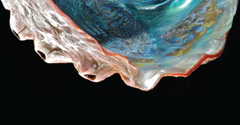Phase 1
First, we propose a few questions:
- What is the purpose of the film production?
- Is it to provide patients, who use a particular drug, with adequate information to educate them as well as possible in order to promote patient compliance and to maximize the drug efficacy,
- Is it to raise public awareness on a particular health problem, or
- Is it to optimize training for students and professionals by using film and 3D animation?
- What does the target group look like? Who are your potential users? Both the look of the film, as the informative content are of great importance, just as the language and the culture idiom of the potential viewer.
- Via which media the film production should be presented? This is important in order to determine the final size of the movie files. There are virtually unlimited possibilities:
- DVD
- BluRay
- Videobrochure with an LCD viewer
- Large datacarriers for lectures
- Web applications
- YouTube channels, Adobe viewer, etc.
- What is your corporate identity, what image material is available and to what extent can we join in with the House style?
- Not insignificant! What is your budget taking into account usable media files that are already in your possession.
Phase 2
When all our questions and any following questions have been answered, we will make a number of proposals on the basis of duration and complexity of the film production. All based on at least full HD quality of the produced film material.
If we have an agreement on one or more of the proposals we will make a mood Board that is submitted to you. The mood Board gives, as the name implies, the feeling that the film production should radiate.
By agreement on the mood Board a script is submitted to you, and where necessary, altered according to your wishes. The script forms the framework of the actual film production.
On the basis of the final script a storyboard, in which the different scenes are shown in a schematic way, will be submitted to you as well. This also can be subject to discussion and be updated if necessary.
In this phase we will discuss if 3D animation is required and where in the production timeline the 3D animation should be placed.
Now we can finally determine the shooting days, the necessary cameras and sound equipment, the lighting, and grip (tripods, sliders, dolly's, steadycam, camera crane, etc.) and identify the movie production staff. It may be that you have chosen to interview opinion leaders and scientists on location. This means location previews for optimal results.
The production design comes in. The production designer creates the feel of the film by choosing locations, props and clothes the actors should wear. Then locations, props and wardrobe will be hired, borrowed or bought.
The casting of actors takes place in accordance with production design and the director.
The cast of the main actors will be presented to you and should be agreed upon.
If necessary the filmset is prepared by so called “Riggers”. The film decor is designed and put together according to production design.
An intensive consultation with the 3D animators takes place. It is important to get the 3D content visually appealing, as true to nature as possible and anatomically and physiologically correct.
Meanwhile a vast administrative task takes place by the director and his/ her staff by breaking down every possible scene in so called “Breakdown forms”, by which every member of the crew as well as the actors know scene by scene what is required. In this process also the scene sequence takes place, the order in which the shots are made in time to create an optimal workflow.
During the production days you are welcome to watch the actual process. Possibly you asked for so-called "Behind the Scenes" film clips or pictures for advertising on your website or in other expressions such as your company newspaper.
After all recordings have been finished we make a provisional edit. This is presented to you again. This preliminary edit will generally be still without voice over (spoken texts) and the music fragments.
The voice over supports the content. Often the images speak for themselves, however if the information is rather complex a voice over is indispensable.
The music plays a distinctive role in any film production. This supports the emotional value, ensures the correct voltage and attracts extra attention where needed by the Viewer. It very much improves the transfer of information.
Of course voice over and music will be presented to you before the final edit takes place and should be agreed by you.
When the provisional edit is agreed with or without amendments, the final edit can take place, while at this stage voice over and music clips are included.
The final film will be offered on the agreed image and sound carriers.
Sometimes the customer commissions post production if, for example, it takes effort to invite users, such as medical specialists, to apply a health education film. For this purpose a movie trailer or teaser can be created that displays the information in a condensed and gripping way.

